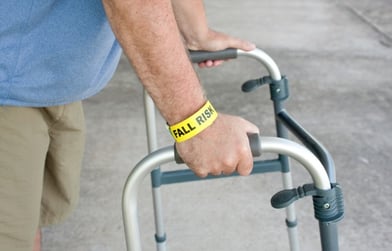 Obesity is an epidemic in our society today. Those who are obese have greater risk of diabetes, coronary artery disease, stroke, and arthritis.
Obesity is an epidemic in our society today. Those who are obese have greater risk of diabetes, coronary artery disease, stroke, and arthritis.
This article discusses obesity in the elderly and how it increases their risk of falling. As might be guessed, the greater an individual's degree of obesity, the greater the risk of falling. A fall may also bring about greater disability for an elder’s ADLs (Activities of Daily Living).
The Risks of Falls for Elders
For more mild cases of obesity (BMI 35.0–39.9 kg/m (2)), an elderly person is at greater risk for long-term disabilities after falling. If an elder is more of a “weekend warrior” type, this claim makes sense. They are obese and need to make lifestyle changes, but they aren’t in such bad shape as to be completely sedentary (inactive). If they attempt a very strenuous activity, they could very well cause themselves a long-term disability.
One claim the article makes is that obesity may reduce an elder’s risk of injury from a fall. This claim doesn’t make sense from an orthopedic perspective. What do most of us do when we fall? We put out our hands to try to catch ourselves, right? Imagine the shoulder and wrist injuries that even a healthy, active athlete could sustain in such a fall. An obese elder is most likely going to have been sedentary (inactive) for at least several months. Being sedentary will have caused atrophy (wasting of muscle tissue) throughout the person’s body. Wrist and shoulder injuries, and perhaps even head and neck injuries, could be expected in an obese elder suffering a fall.
Prevent Injuries Through Exercise and Diet
Practicing prevention is much easier than being laid up with an injury. Strength training, yoga, Pilates, and other forms of exercise, combined with a healthy diet, can help keep us all more fit and active in our later years.
Download our whitepaper on Advanced Balance Programming for your CCRC.


